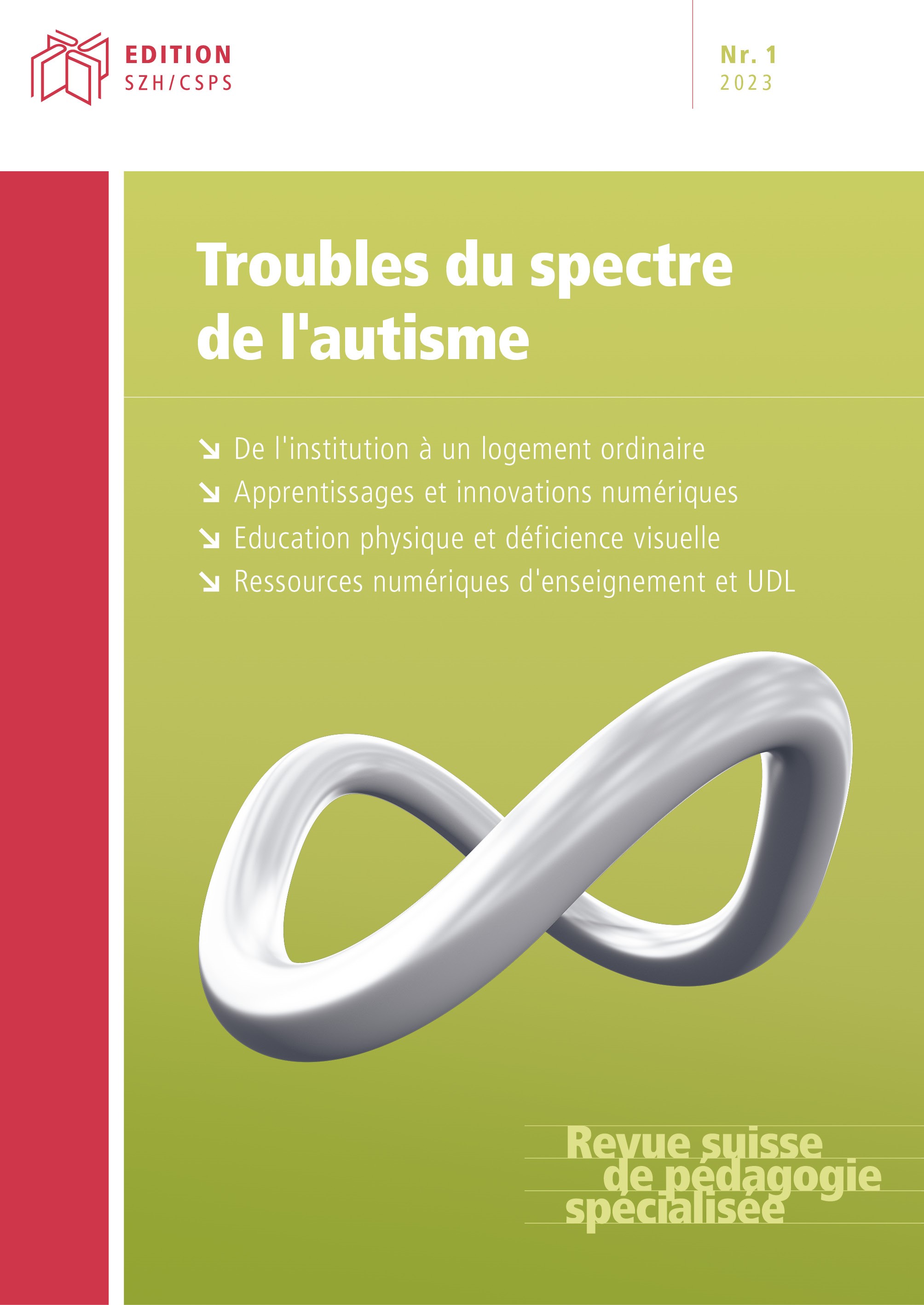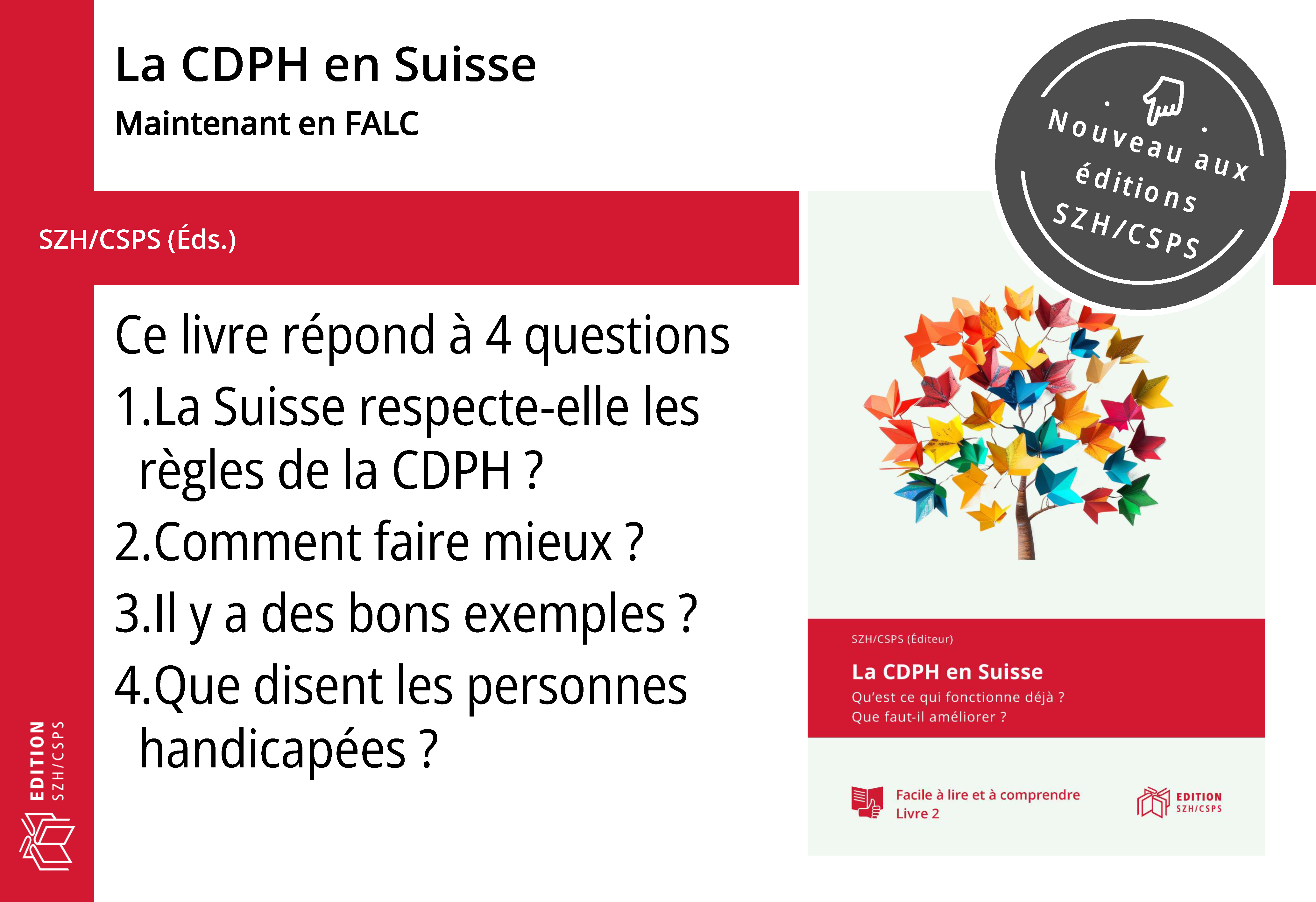L’annonce du diagnostic aux enfants et jeunes adultes avec TSA
DOI :
https://doi.org/10.57161/r2023-01-03Mots-clés :
diagnostic, trouble du spectre de l’autismeRésumé
Le parcours menant au diagnostic du trouble du spectre de l’autisme (TSA) est un processus complexe qui peut être une source possible de stress pour les parents et les spécialistes. La qualité des informations transmises et le suivi post-diagnostic sont des facteurs qui contribuent à la satisfaction des personnes concernées. À un moment donné, les parents se posent la question de savoir comment communiquer le diagnostic du TSA à leur enfant. En collaboration avec les familles, le parcours « Storie di
persone », constitué de trois étapes, est un support flexible et modulable permettant de communiquer le diagnostic aux enfants et jeunes adultes[1] présentant un TSA.
[1] Pour des questions de langage épicène, « jeunes adultes » est employé comme synonyme de « adolescentes et adolescents »
Références
American Psychiatric Association [APA]. (2013). Diagnostic and statistical manual of mental disorders (5 th ed.). APA.
Attwood, T. (2008). Le syndrome d’Asperger. Guide complet. De Boeck.
Centre for Disease Control and Prevention [CDC]. (2014). Prevalence of Autism Spectrum Disorder Among Children Aged 8 Years - Autism and Developmental Disabilities Monitoring Network, 11 Sites, United States, 2010. Morbidity and Mortality Weekly Report, 63(2), 1–21. https://www.cdc.gov/mmwr/preview/mmwrhtml/ss6302a1.htm
Holliday, E. L., Stanley, H. C., Fodstad, J. C., & Minshawi, N. F. (2016). Stress and satisfaction in the diagnostic pro-cess. In J. L. Matson (Ed.), Handbook of assessment and diagnosis of autism spectrum disorders (pp. 137-155). Springer. https://doi.org/10.1007/978-3-319-27171-2_8
Howlin, P., & Asgharian, A. (1999). The diagnosis of autism and Asperger syndrome: findings from a survey of 770 families. Developmental medicine and child neurology, 41(12), 834-839. https://doi.org/10.1017/s0012162299001656
Jones, L., Goddard, L., Hill, E. L., Henry, L. A., & Crane, L. (2014). Experiences of receiving a diagnosis of autism spec-trum disorder: A survey of adults in the United Kingdom. Journal of autism and developmental disor-ders, 44(12), 3033-3044. https://doi.org/10.1007/s10803-014-2161-3
Mazumder, R., & Thompson-Hodgetts, S. (2019). Stigmatization of Children and Adolescents with Autism Spectrum Disorders and their Families: a Scoping Study. Review Journal of Autism and Developmental Disorders, 6(6), 96-107. https://doi.org/10.1007/s40489-018-00156-5
National Autistic Society [NAS]. (2020). Telling your child about their diagnosis – a guide for parents and carers. https://www.autism.org.uk/advice-and-guidance/topics/diagnosis/disclosing-your-autism/parents-and-carers
Pavlopoulou, G., Burns, C., Cleghorn, R., Skyrla, T., & Avnon, J. (2022). “I often have to explain to school staff what she needs”. School experiences of non-autistic siblings growing up with an autistic brother or sis-ter. Research in Developmental Disabilities, 129, 1-14. https://doi.org/10.1016/j.ridd.2022.104323
Punshon, C., Skirrow, P., & Murphy, G. (2009). The ‘not guilty verdict’: psychological reactions to a diagnosis of Asperger syndrome in adulthood. Autism, 13(3), 265-283. https://doi.org/10.1177/1362361309103795
Publiée
Comment citer
Numéro
Rubrique
Licence
© Gionata Bernasconi, Nicola Rudelli 2023

Ce travail est disponible sous la licence Creative Commons Attribution 4.0 International .



